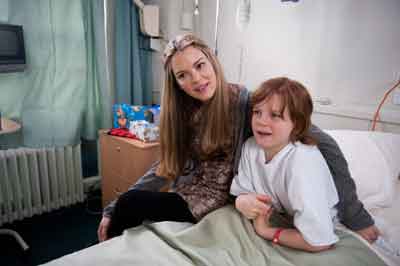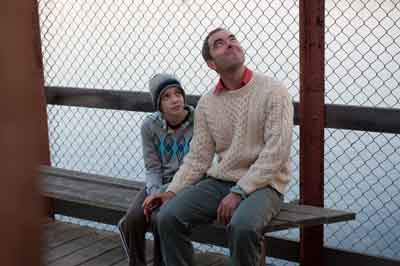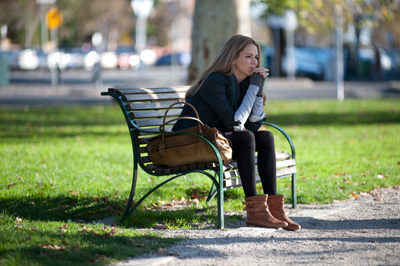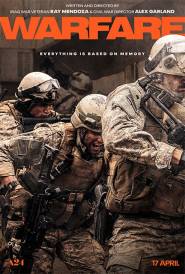Matching Jack

Matching Jack
Cast: Jacinda Barrett, James Nesbitt, Yvonne Strahovski, Richard Roxburgh, Kodi Smit-McPhee, Tom RussellDirector: Nadia Tass
Genre: Drama
Rated: M
Synopsis: An inspirational drama about the unbreakable bond between parent and child. Marisa (Barrett) is a mother forced to take matters into her own hands to save the life of her son, Jack (Russell) after he is diagnosed with Leukemia. Determined to find a bone marrow donor, Marisa undertakes a tireless and exhaustive search, including delving into the infidelities of her husband David (Roxburgh) in the hope that a donor might exist as a result of one of his many extra marital affairs. Meanwhile, during his treatment, Jack befriends Finn (Smit-McPhee), a young Irish boy in the next bed who has also been diagnosed with the same disease whilst travelling the world with his father, Connor (Nesbitt). In contrast to Marisa's feelings of frustration and anger, Connor is determined to be positive - inspiring his son by creating a beautiful, imaginary world in which he can face his illness. Marisa and Jack slowly form a bond with Connor and Finn, leading them all on a path to self-discovery, honesty and hope.
Release Date: September 30th, 2010
Website: www.matchingjack.com
Matching Jack
 The Film was shot over six weeks in Melbourne. Pre-production was officially six weeks before that, but work on the film had actually started years earlier. The first additional team on board was the production designer and set dresser so that we could get a jump on some of the more difficult art department elements, namely the figureheads, the hospital and the boat shed. There were no studio builds on the shoot - it was an all location shoot, but some of the major locations required extensive adjustments before they were camera ready.
The Film was shot over six weeks in Melbourne. Pre-production was officially six weeks before that, but work on the film had actually started years earlier. The first additional team on board was the production designer and set dresser so that we could get a jump on some of the more difficult art department elements, namely the figureheads, the hospital and the boat shed. There were no studio builds on the shoot - it was an all location shoot, but some of the major locations required extensive adjustments before they were camera ready. The prime location was a disused hospital, which the art department were able to transform into a fully working hospital. The other major location was a boatshed at Williamstown, which is normally the local Sea Scouts boat shed, but again, the art department transformed it, this time into a workshop where Connor carves his extraordinary ships figureheads. The boatshed was a windowless boat storage shed; the art department turned it into a very functional workshop, furnace and living area. Doors were added, windows were cut into the walls, and the roller door was changed to a wooden sliding door. Work benches, figureheads and machinery were trucked in. It looked like it had been there for years, and Jimmy Nesbitt made it his own from the day he first walked in there. The scenes with Kodi Smit-McPhee and Jimmy Nesbitt in this space are magical; they are some of the most tender, most delicate moments in the film.
The shoot itself was restricted because we have two children in this film - they can only work a certain period of time per day, they need to be tutored and they can't work past 10pm at night. So the schedule became quite a complex document that interweaved adult actors with young actors, locations, and the required light for each scene. Often the Director of Photography would require a scene to be shot in 'magic hour' or dusk - obviously there is a short window to get such a scene; everything has to be well organized in advance without intruding on the overall day's shooting schedule. When the right time is approaching, the first assistant director instructs the crew to set up for the magic hour shot, then the cameras roll at the critical moment. We often will shoot dusk for dawn because it is easier to set up in the light, then wait for the right light level to be reached, rather than setting up in the dark which would be the case for a dawn shoot.
The trickiest location was the boatshed interior and exterior - the weather changed constantly down by the water at Williamstown - we often started the day in fog, then that cleared to bright sunshine; by nightfall it might be raining or windy or both. The morning we did the scene where Connor rows Marisa back from his yacht, we had pre-rigged to create a large area of fog. This was achieved by effectively making a dam for the fog machines by stringing clear plastic up two jetties, then suspending another plastic wall between the two jetties. This would contain our man-made fog long enough to get the shot. On that day, we need not have worried. One of the thickest fogs of the year had descended on Melbourne and we were able to shoot for hours with this wonderful coincidence.
Sound recording was extremely difficult in this location. Sound travels well over water so we were constantly hampered by city noise, local traffic and the slap of water underneath the boatshed. The choice to avoid this would have been to build the interior of the boatshed on a sound stage, but then you lose the immediate connection between the exterior and the interior - an element that plays well in this film.
As we were shooting in winter, our days were short, so we would often start with day scenes, then move into night scenes. In the hospital we were able to avoid this problem by choosing a hospital ward that could be lit for day or night at any time of the day. The gaffer, Brendan Madden, and his crew, were able to remotely change the hospital corridor lights from day to night saving an enormous amount of time and therefore, money. We also chose a room with an outside verandah, so we could rig lamps and blackout material. You'll notice in the film that sometimes the curtains in the ward are open, sometimes closed. Of course this would naturally happen anyway, but our reason for doing this was so that we could shoot day scenes at night. We'd close the curtains then light up the verandah so it appeared that there was daylight out there.
 The shoot was preceded by a rehearsal period. Rehearsals took place in a local hall. Nadia Tass would bring actors in one by one, then in two's, as she would start to work the scenes and the characters in those scenes. The family unit had to feel real, the relationship of the two boys needed careful honing, and the development of the relationship between Marisa and Connor needed careful marking in its development and its intensity. The two boys needed particular attention. Tom Russell as Jack has a wonderful, open, childlike quality that needed to be channelled into a fine, controlled performance and Kodi Smit-McPhee, after hearing what was required of him, would then figure out ways of arriving at particular points in his characters arc. Jimmy Nesbitt would constantly refer to Kodi Smit-McPhee as Brando. He found his scenes with Kodi Smit-McPhee to be some of the most extraordinary experiences of his acting career. The two boys together light up the screen - the older wiser Finn leading the younger, exuberant Jack as they sail the uncharted waters of the oncology ward is at one time gut wrenching and another heart warming.
The shoot was preceded by a rehearsal period. Rehearsals took place in a local hall. Nadia Tass would bring actors in one by one, then in two's, as she would start to work the scenes and the characters in those scenes. The family unit had to feel real, the relationship of the two boys needed careful honing, and the development of the relationship between Marisa and Connor needed careful marking in its development and its intensity. The two boys needed particular attention. Tom Russell as Jack has a wonderful, open, childlike quality that needed to be channelled into a fine, controlled performance and Kodi Smit-McPhee, after hearing what was required of him, would then figure out ways of arriving at particular points in his characters arc. Jimmy Nesbitt would constantly refer to Kodi Smit-McPhee as Brando. He found his scenes with Kodi Smit-McPhee to be some of the most extraordinary experiences of his acting career. The two boys together light up the screen - the older wiser Finn leading the younger, exuberant Jack as they sail the uncharted waters of the oncology ward is at one time gut wrenching and another heart warming. The atmosphere on the set was jovial when setting up, but once actors were on set, the atmosphere changed to a quiet, professional air. As many of the scenes were complex, emotional and demanding, everyone respected the need to give the actors the safe platform that they needed to give their best performances. We generally used two cameras on each scene and this enabled Nadia Tass the choice of two different angles to work with in the editing suite. We shot on Sony F23 digital cameras, but also carried a 35mm camera for some shots where the director of photography felt that a filmic capture was more appropriate. This mainly occurred with exterior shots, the Irish material, and some of the night exteriors. The post lab then weaved their magic to seamlessly marry the two different mediums together.
The first three weeks of the filming was in locations primarily in Williamstown, a bayside suburb of Melbourne. Here we had great co-operation from the local council, and consequently we concentrated a lot of our doorknock sequences in this area. All the sailing sequences and other boat scenes were filmed here as well. Williamstown has a great sailing community and we were able to draw on local sailors and clubs to help us. On the day we shot the boys sailing sequences, there was virtually no wind at all. Whilst that made it quite safe it didn't really make for exciting shots. We had to re-arrange the day and were lucky enough to have a breeze pick up in the afternoon. Neither boy had sailed before, so they had lessons in the rehearsal period to give them a crash course in the fundamentals. We actually hid a young sailor in Jack's boat, just in case something went wrong.
The other sailing boat in the film is the "boat" that Connor builds around Finn's bed in the hospital. This is a modular construction so that we could show it on screen in its various stages of development… the final bed boat proved to be quite a tricky device to "sail" around the corridors of the hospital. It also needed to be adjusted depending on the height of the corridors. Nadia Tass wanted a full height shot of the bedboat coming around the corner under full sail and apparently being propelled by a pedestal electric fan. Suffice it to say, there was some wire removal needed on this shot.
The set-up at the hospital was actually very film friendly. The hospital we used is the old Royal Women's Hospital in Melbourne. It was decommissioned a year earlier, so many of the fittings and all the furniture and beds had to be sourced and re-installed. But on the upside, we were able to park all the unit vehicles on site - actor's trailers, catering, make-up, wardrobe, props and camera were all within easy reach of the set. As it is a non-working hospital it makes a perfect set. There was plenty of power, water, and no restrictions with noise and movement. There was one issue - there was apparently, a ghost on the floor above us - crew who ventured upstairs were aware of 'a presence' and no one particularly wanted to investigate certainly after nightfall. We also were not allowed any naked flame as the old oxygen lines had never been fully decommissioned, so there was a chance that flammable gases could still be lingering. There were two times this was an issue - once for a birthday party scene with candles on the cake; the other was in a scene where Connor adorns the ward with candles - these candles ended up being a mixture of battery powered and visual effects.
The design work required with the hospital posed a particular set of problems for the production designer, Jon Dowding. The brief was to make the hospital fairly patient friendly, but without all the bright colours and warmth that most modern children's hospitals exhibit. This particular hospital had carpeted corridors; Nadia Tass was keen for this corridor to have a much more austere tone to it, which required a polished floor. Given that there was very little money available for such changes, it became the art department's biggest challenge to source a flooring material that was both functional and cheap. The end result looks every part like it's been there for 20 years. Another anomaly in this corridor was that there were no ceiling lights; the gaffers remedied that in one long Saturday, right before we started shooting in the hospital - they replaced ceiling tiles with Perspex with the light sources above it.
We were fortunate to have Mark Warner as our editor on this film. Mark Warner has a string of credits including an Academy Award Nomination for Oscar winner Driving Miss Daisy. Nadia Tass and Mark Warner worked for two months on the picture edit; they worked long and hard on honing the story and juggling the various story threads into their best combination.
The music was written over a period of months by well known Australian jazz pianist and composer, Paul Grabowsky. Paul Grabowsky brought not only his extraordinary skill and talent as a musician to this film but, having had close experiences with the oncology ward at Melbourne's Royal Children's Hospital, he was able to bring an empathy to the score that permeates the very soul of the film.
Matching Jack was truly a work of love. Virtually everyone worked for far less than their normal fees; we were able to get many locations at cheap rates or for free. There was a sense that this was a story that had to be told; there were many times on set that there were hardened film crew stalwarts with a tear in their eye - there was a great respect for the actors and the story they were telling, but always there was a sense that this was a story for the masses, not one for the elite art houses of the world. As William Goldman said, 'Nobody knows anything...'. We have great expectations for this movie - as does every filmmaker. But there is a magic about this film - not just because of Jimmy Nesbitt's stellar performance, not because of Kodi Smit-McPhee's extraordinary journey on screen, not just because of Tom Russell's exuberance and innocence, and not just because of Jacinda Barrett's beautifully metered performance as the mother - its all that and more. We hope "Matching Jack" will stay with you forever....
MORE



